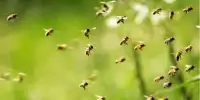Appalachian mountain streams are alive with life, trickling down over boulders and surrounded by wildflowers and ferns. They are home to some of the world’s most diverse freshwater creatures, including several species that are unique to the area.
According to research published in the September 2021 issue of the journal Ecological Applications, mountaintop coal mining, which downstream contamination affects many of these species, poses a serious danger to biological diversity.
The impacts of mountaintop coal mining are far more pervasive than previously thought, according to researchers: The number of species in streams from severely mined watersheds is 40 percent lower than in streams with cleaner water.
Fish, macroinvertebrates (such as insects, clams, and crabs), algae, fungus, bacteria, unicellular creatures known as protists, and other species have all lost biodiversity. To put it another way, it isn’t simply the most vulnerable species that are being harmed.

“The impacts are really distributed across the whole tree of life,” said Marie Simonin, a researcher at France’s National Research Institute for Agriculture, Food and Environment (INRAE) and lead author of the study.
Simonin and her colleagues studied 93 streams in West Virginia’s Appalachian range, ranging from highly mined watersheds to relatively pure streams. They discovered a definite link between the density of mining operations and biodiversity loss: the more mining, the fewer species detected.
“It was really surprising to see how consistent this decline in biodiversity is across all these really different groups of organisms, starting at really low levels of disturbance,” said Emily Bernhardt, Professor and Chair of Biology at Duke University and senior author of the paper.
The findings reveal another alarming pattern: considerable biodiversity loss was identified in streams whose water was still well below the Environmental Protection Agency’s (EPA) maximum disturbance criteria.
“A very small increase in mining activities in the watershed is already too much,” Simonin said.
This means that the detrimental effects of pollutants in aquatic species start at much lower concentrations than previously assumed.
“By the time you get to the EPA’s reference point, you’ve already lost most of the species you’re going to lose,” Bernhardt said.
Aquatic biodiversity is extremely valuable in terms of both economics and aesthetics, and it is substantially responsible for preserving and supporting general environmental health. Humans have traditionally relied on aquatic resources for food, medicine, and building materials, as well as recreational and economic activities like fishing and tourism. For food, materials, and breeding grounds, aquatic species rely on a wide range of aquatic environments and resources.
Although biodiversity loss due to mining has been demonstrated in different categories of species separately, this study stands out because it examines the entire tree of life at the same time, in the same streams. To accomplish so, the researchers utilized an experimental approach known as environmental DNA (eDNA), which examines pieces of genetic material that organisms leave behind in their environment.
This DNA might have come from feces, skin or scale fragments, or unicellular creatures. Researchers obtained water samples from each stream and filtered them through ultra-fine filters to collect it. The DNA remains attached to the filters, allowing it to be removed, sequenced, and sorted later.
Algae, for example, have genes or gene segments in common with other species. Scientists may detect what is hanging around in each stream by comparing the DNA retrieved from the filters with DNA is known to belong to a certain species or group of species, similar to CSI agents running samples through their databases (but with far less drama).
This technique has a lot of potential for assessing biodiversity and water quality consequences.
“eDNA is an inexpensive approach that can provide substantial insights into drivers of biodiversity,” Bernhardt said. “It can open the possibility for monitoring water quality impacts over a much larger number of rivers across the globe.”
The findings acquired using eDNA are comparable to those obtained with more traditional approaches, yet require a fraction of the time and effort. Using eDNA, the scientists was able to identify 28 different fish species in all 93 mined streams. This is analogous to past research that meticulously gathered, numbered, and identified the region’s fish variety. With comparable results, eDNA offers a considerably faster and less intrusive way of diversity testing.
“You take a very small amount of water and you’re able to see the impact on all those organisms. You don’t need to kill any animals, you don’t need a huge team of people skilled in identifying all of these species, everybody could do the fieldwork,” Simonin said. “This can really change the scale at which we can monitor biodiversity.”
This research was funded by NSF Grant No. EAR-1417405.
















